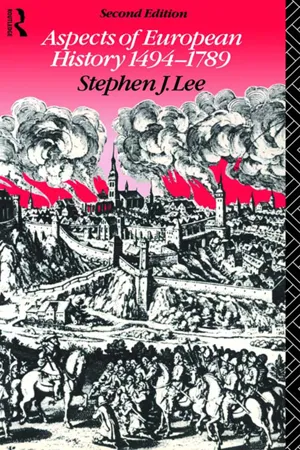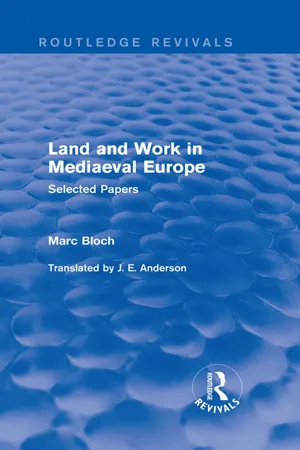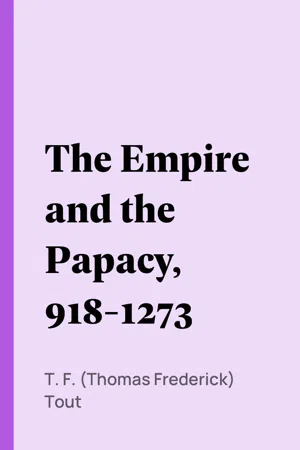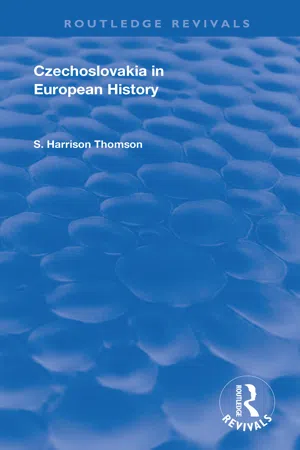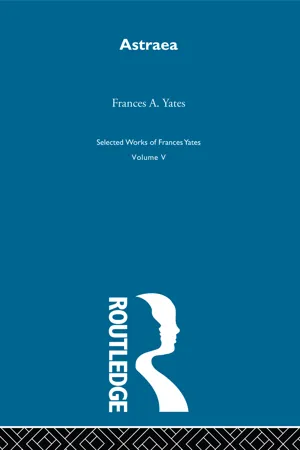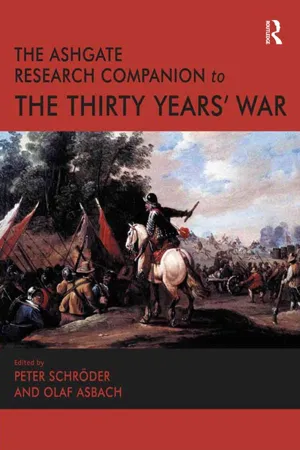History
The Holy Roman Empire
The Holy Roman Empire was a complex political entity in central Europe that existed from 962 to 1806. It was not a centralized state but rather a loose confederation of territories ruled by an emperor, often in conflict with the papacy and various princes. The empire's power and influence fluctuated over time, and it ultimately dissolved in the early 19th century.
Written by Perlego with AI-assistance
Related key terms
6 Key excerpts on "The Holy Roman Empire"
- eBook - ePub
- Stephen J. Lee(Author)
- 2005(Publication Date)
- Routledge(Publisher)
13 The Holy Roman Empire 1493–1618The origins of The Holy Roman Empire can be seen in the reign of Charlemagne, whose Carolingian territories were the basis of his claim to be the direct successor of the Imperial Caesars. Gradually, however, the structure of the Empire weakened until, in the well-known phrase of Voltaire, it was neither Holy nor Roman nor an Empire. Three developments between 1493 and 1618 greatly contributed to this process. Attempts to provide a workable constitution failed miserably, leading to political disintegration by 1608. Constitutional crises coincided with the emergence of two sides with strongly opposed religious views, providing the potential for direct conflict. The actual outbreak of war was caused by the situation in Bohemia, badly mishandled by the Habsburgs in the second decade of the seventeenth century.The constitutional structure of the Empire had already been loosened in the Middle Ages with the growth of regional autonomy within its borders. The major landmark in the rise of individual states was the Golden Bull of 1356, which created seven Electorates within the Empire, conferring the privilege of electing all Emperors on the Archbishops of Cologne, Trier and Mainz, the King of Bohemia, and the princes of the Palatinate, Saxony and Brandenburg. These were the main rulers within the Empire but, also under the ultimate authority of the Emperor, there were, by the fifteenth century, over 2,500 administrative units. These included 2,000 imperial knights, 50 ecclesiastical princes, 30 secular princes, 70 prelates and 66 Free Cities,1 all of whom aspired to independence while, at the same time, expecting to be defended against external enemies and to receive other benefits of association. Unfortunately, the Empire possessed no effective institutions. The central legislature was the Diet (Reichstag); - eBook - ePub
Land and Work in Mediaeval Europe (Routledge Revivals)
Selected Papers
- Marc Bloch, J. Anderson(Authors)
- 2015(Publication Date)
- Routledge(Publisher)
1 The Empire and the Idea of Empire under the Hohenstaufen1 DOI: 10.4324/9781315719917-1I The Imperial Institution
The State governed by the Hohenstaufen from 1138 to 1250 was called the Empire; the heads of this State aspired to the title of Emperor and usually bore it at least for part of their reigns. How did this political institution – the strangest known to the Middle Ages – come into being, and what in it constitutes the essentials of sovereign power?1 Carolingian origins: the territorial formation of the Empire
At the end of the 8th and beginning of the 9th century the Frankish kingdom had subjugated and absorbed a large part of Eastern and Central Europe. On December 25th 800 its head received the imperial crown from the Pope. The German chroniclers of the 12th and 13th centuries were in the habit of summing up this event by saying that the Empire, which had previously passed from the Romans to the Greeks, was thus handed on from the Greeks to the Franks. This stating of the matter is not strictly accurate. The Greek Emperors, with their capital at Constantinople, were without any breach of tradition the heirs of the Latin-speaking Emperors whose capital city had been Rome. They continued in existence after 800, still calling themselves Emperors and holding themselves to be the legitimate successors of the Caesars. But since December 25th 800, there was once more an Emperor in the West who also claimed to be the rightful heir of Augustus and Constantine, and considered Rome to be his city and one of the principal seats of his power.Everyone knows that the Carolingian Empire did not last as long as the State. The treaty of Verdun in 843 divided the Empire of Louis the Pious among his three sons. In the West, there came into being the kingdom of Charles the Bald – ‘Western France’, later to become simply France.In the East, it was the kingdom of Louis, ‘Eastern France’. To be precise, this kingdom comprised that part of the Empire extending north of the Alps and east of the Rhine, excluding – on the right bank of the river – Frisia, but including – on its left bank – the towns of Mainz, Worms and Speyer or Spires. Its inhabitants nearly all spoke Germanic dialects, lumped together in Carolingian times under the term theodisca lingua (‘the language of the people’: perhaps ‘the language of the pagans, the gentiles’). Gradually it became customary to call the inhabitants of these regions by the same name as their language: diutischiu liute. The country was called Diutischin lant, nowadays Deutschland - eBook - ePub
- T. F. (Thomas Frederick) Tout(Author)
- 2020(Publication Date)
- Perlego(Publisher)
Feudalism was not long in undisputed possession of the field. From the revival of the German kingdom by the Saxon kings sprang The Holy Roman Empire of the German nation, beginning with the coronation of Otto the Great in 962. Less universal, less ecclesiastical, less truly Roman than the Carolingian Empire, the Empire of the Saxons and Franks was based essentially upon the German kingship, yet was ever trying to outgrow its limitations, and to claim in its completeness the Carolingian heritage. Within a century of the coronation of Otto, the revived Empire included in its sphere the German, Italian, Burgundian, and Lotharingian realms—in short, all the Empire of Charles the Great, save the West Frankish states, ruled since 987 by Hugh Capet and his descendants. Moreover, the Empire had pushed forward the limits of Christianity and civilisation in the barbarous north and east. It had extended its direct rule over a wide stretch of marchlands. The Scandinavians, Wends, Poles, Bohemians, and Hungarians all received the Christian faith from missionaries profoundly impressed with the imperial idea, and their conversion involved at least temporary dependence upon the power that again aspired to be lord of the world. At home the Emperors checked and restrained, though recognising and utilising, the feudal principle. In their fear of the lay aristocracy, no less than in their zeal for religion and order, they associated themselves closely with the work of reforming the Church. But the restoration of religion soon involved the restoration of Papacy and hierarchy, and thus they raised up the power before which Emperors were finally to succumb. Yet the Empire did not fall until it had kept central Europe together for nearly three centuries, at a time when no other power could possibly have accomplished the task. From the coronation of the Saxon to the fall of the Hohenstaufen, The Holy Roman Empire had no small claim to the lordship of the world.The Hildebrandine Reformation and the Papacy.The darkest hour of the State was the darkest hour of the Church. The last faint traces of the Carolingian revival of religion disappeared amid the horrors of Danish, Saracen, and Hungarian invasions. The feudalism that saved Europe from the barbarians now began to infect what remained of Christian life with its own ferocity, greed, and lust. The spiritual offices of the Church were becoming heritable property, dissociated from all effective spiritual duties. But amidst the turmoil of feudal times, a few nobler spirits sought salvation from the wickedness that lay thick around them in the solitude of the cloister. Before the end of the tenth century, the Cluniac revival presented to Europe an ideal of life very different from feudal militarism. In alliance with the Empire, the Cluniacs restored religion in central Europe, and missionaries, working in their spirit, spread the Gospel beyond the bounds of the Empire among the barbarians of the north and east. But from Cluny also came new theories of the province of the Church, which soon brought religion into sharp conflict with the temporal authority. When the power of the State lay almost in abeyance, it was natural that the Church should encroach upon the sphere it left vacant. From Cluny came the Hildebrandine Reformation, and from the theories of Hildebrand sprang two centuries of conflict between Papacy and Empire.| The struggles of Papacy and Empire.|The great struggle of Popes and Emperors (the highest expression of the universal struggle of the spiritual and temporal swords), was the central event of the Middle Ages. It first took the form of the Investiture Contest, but when the Investiture Contest had been ended by the substantial victory of the Church, the eternal strife was soon renewed under other pretexts. It inspired the contest of Alexander III. with Frederick Barbarossa, of Thomas of Canterbury with Henry of Anjou, of Innocent III. with half the princes of Europe, and the final great conflict between the successors of Innocent and Frederick II. At last the Empire succumbed before the superior strength of the Papacy. But the Hohenstaufen were soon revenged; and, within two generations of the death of Frederick II. - eBook - ePub
- S. Harrison Thomson(Author)
- 2019(Publication Date)
- Routledge(Publisher)
But the situation brought about by Joseph in 1708 lasted less than a century. The Hapsburgs kept the imperial title in the family, yet, aside from some slight satisfaction of the family’s vanity, the honor was meaningless. During the Napoleonic wars, the props under all political structures were subjected to shocks that threatened to be devastating. Emperor Francis I came to the conclusion that it would be expedient to surrender his claim to first place among European rulers in exchange for something less grandiose but more real. In 1804 the family domains of the Hapsburgs were declared to constitute the Austrian Empire. In 1806 Francis gave up the title of Emperor of The Holy Roman Empire. By a few simple acts and without any fanfare, the dissolution of The Holy Roman Empire of the German Nation was proclaimed. In the court decree of August 21, 1806, we read:. . . that the imperial feudal property of the electoral dignity and the office of Cupbearer, associated with the crown of Bohemia, and their every connection with the Empire stemming from the Privileges of 1212 and 1459 [should be 1462], then of the act of Readmission of 1708 for sitting and voting in the electoral college, is hereby dissolved.Thus all previous arrangements which the Hapsburgs had assumed from time to time, for their own benefit, were legally cancelled, though it should be pointed out, in retrospect, that the Hapsburgs seem to have followed consistently a certain anachronistic pattern in that most of the engagements they entered into with the kingdom of Bohemia were based upon legal or political concepts which were a century or two or even more behind the actual conditions.In place of the now dissolved Holy Roman Empire there grew up a free confederation of German states which had a definitive organization after the Congress of Vienna in 1815. The Hapsburgs, undismayed by their own failures in the past, set about to exercise a dominant influence in this new body. Against strong opposition Prince Metternich succeeded in arranging that Austria should have a perpetual delegate in the congress of the newly established Bund - eBook - ePub
- Frances A. Yates(Author)
- 2013(Publication Date)
- Routledge(Publisher)
PART I CHARLES V AND THE IDEA OF THE EMPIREIn the middle of the sixteenth century, The Holy Roman Empire, which had seemed to be dwindling more and more rapidly into a local German concern, suddenly takes on once more something of its old significance. The century in which a new Europe, with its great states built up on principles of realistic statecraft and infused with national patriotism, was in process of formation saw also a late manifestation of the Monarch, the potential Lord of the World, in the person of the Emperor Charles V. The patterns of the new Europe take their shape under the shadow, or the mirage, of a recrudescence of the idea of the Empire. The revival of imperialism in Charles V was a phantom revival. That he looked so much like a Lord of the World was due to the Hapsburg dynastic marriage policy which had brought such vast territories under his rule, and when, after his death, Phillip II succeeded to the Spanish monarchy whilst the imperial title passed to another branch of the Hapsburg family, the whole imposing edifice of the empire of the second Charlemagne broke down. The transitory and unreal character of the empire of Charles V is the aspect of it usually stressed by modern historians. Whilst not denying its unreality in the political sense, it is the purpose of the present essay to suggest that it is precisely as a phantom that Charles’s empire was of importance, because it raised again the imperial idea and spread it through Europe in the symbolism of its propaganda, and that at a time when the more advanced political thinking was discrediting it.The following attempt to place the empire of Charles V in a historical context is obviously no more than a slight sketch, or a partial evocation of a vast subject. It is not concerned with political realities, nor with straight political history, but with the idea of empire, or the imperialist hope. As Folz has said, ‘A la différence de la notion politique de l’Empire . . . l’espérance impériale demeure extrêmement fluide; elle se meut toujours sur le plan universel.’13 - Olaf Asbach, Peter Schröder(Authors)
- 2016(Publication Date)
- Routledge(Publisher)
PART I The Holy Roman Empire of the German NationPassage contains an image
1 Imperial Politics 1555–1618
Joachim Whaley DOI: 10.4324/9781315613666-3Did Germany slide into war in 1618? Many historians have certainly thought so. The period 1555–1618 has rarely been studied in its own right but rather as an adjunct to two larger narratives. Some have viewed it as little more than an extended prelude to war. Others have described a dismal phase in the story of the decline of The Holy Roman Empire, characterised by the triumph of the princes and the establishment of narrow provincialist confessional regimes, the prelude to the dominance of foreign powers over Germany after the Peace of Westphalia.11 For a more detailed discussion of the topics treated in this chapter, see J. Whaley , Germany and The Holy Roman Empire, Volume I: Maximilian I to the Peace of Westphalia 1493–1648 (Oxford, 2012). Other useful surveys are: G. Schmidt, Geschichte des Alten Reiches: Staat und Nation in der Frühen Neuzeit 1495–1806 (Munich, 1999); H. Rabe, Deutsche Geschichte 1500–1600: Das Jahrhundert der Glaubensspaltung (Munich, 1991); H. Schilling, Aufbruch und Krise: Deutschland 1517–1648 (Berlin, 1988); M. Lanzinner, ‘Das konfessionelle Zeitalter 1555–1618’, in W. Reinhard (ed), Gebhardt: Handbuch der deutschen Geschichte, vol. 10, 10th edn (Stuttgart, 2001), pp. 3–203; and T. Brady , German Histories in the Age of Reformations, 1400–1650 (Cambridge, 2009).The old nationalist master narrative of German history typically characterised the period after the Peace of Augsburg in 1555 as one of hopeless division and of growing tension and conflict that finally erupted in the Thirty Years’ War. In 1855 Johann Gustav Droysen wrote that the Reformation had concluded Germany’s national history.2 The triumph of princely liberty in 1555, he declared, created an ‘impossible situation, a political chaos’. The price the Germans paid for religious peace was ‘complete political bankruptcy’. Parity between Catholics and Protestants paralysed the empire; the ‘thoughts [of the Germans] became base and [their] hearts narrow’. In 1869, Heinrich von Treitschke echoed the ‘manly tone of anger and contempt’ with which Droysen had denounced the ‘unspeakable humiliation’ that resulted from the ‘voluntary self-mutilation of a great, rich, martial nation’ in agreeing to the terms of the Peace of Augsburg. This, he wrote, was Germany’s ‘darkest era’. He later conceded that the Peace had at least secured the future of Protestantism and ‘freedom of thought’, the foundations for Germany’s Protestant destiny. Yet Treitschke insisted nonetheless that these decades constituted the ‘ugliest period of German history.’3
Learn about this page
Index pages curate the most relevant extracts from our library of academic textbooks. They’ve been created using an in-house natural language model (NLM), each adding context and meaning to key research topics.
